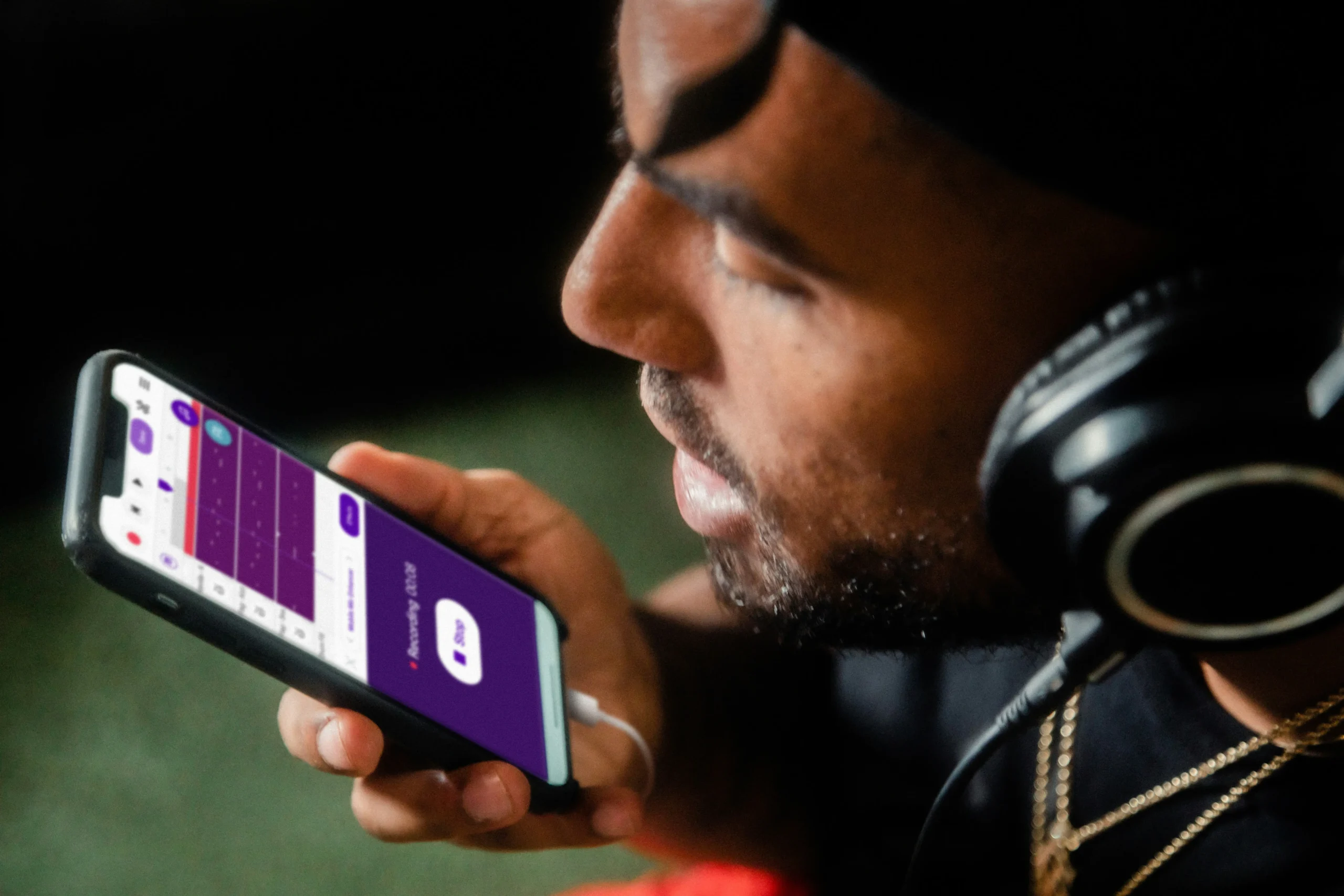Have you been a victim of fraud from a fake social media account, or has someone used your name to scam people you know? Social media impersonation is a growing popular fraud tactic, with approximately 83 million fake accounts, according to Nordstern Technologies.
In this post, we will explain what social media impersonation is, the different types that exist, how to detect it, and most importantly, how to manage impersonation on social media and report this practice, helping you stay safe online.
Need support after a scam? Join our community today.
What is Social Media Impersonation?
Social media impersonation is the creation of social media accounts that impersonate others by using their names, images, or other recognizable attributes. While some accounts, such as fan or parody profiles, are harmless, others are used to spread false information and commit fraud, violating platform terms and potentially leading to legal consequences.
Discover how online scams can land you in jail. Explore the legal consequences and what actions can lead to serious penalties.
What Are the Types of Social Media Impersonation?
Social media impersonation takes on many forms, each with its own distinct set of challenges and potential risks. Next, we explore the various types of social media impersonation and explain how they operate and the specific threats they cause:
1. People Impersonation
Impersonators often create fake profiles to mimic real people. These profiles may be used for scams, unauthorized access to accounts, or blackmail, exploiting personal content to manipulate victims. This form of impersonation can lead to emotional trauma and financial harm as private information is used inappropriately.
2. Business Impersonation
For businesses, especially well-known brands, impersonation risks go beyond reputational damage. Fraudulent accounts posing as companies can trick customers into unsafe interactions, such as fake UPS text messages that include deceptive offers or malicious links, putting customer information and device security at risk.
3. TikTok Impersonation
On platforms like TikTok, where content creators and influencers are prominent, impersonation is common. Imposters who copy real accounts may confuse followers and hurt the original creators’ efforts by selling questionable products or asking for money for fake projects.
4. Phishing
This type of scam involves impersonating a brand or its employees through emails or text messages to steal sensitive information, such as social security numbers, passwords, or bank details. Commonly seen in the financial sector, such as fraud involving Bank of America, these scams exploit interactions using fake accounts on social media.
5. Product Falsification
Fake brand pages impersonating well-known companies, using aggressive marketing to attract consumers to fake websites for transactions. Shoppers may accidentally buy fake products or share sensitive information on insecure platforms. This tactic is widespread in the luxury and fashion sectors, targeting high-demand items like designer handbags and clothing.
6. Fake News
Some impersonators pose as politicians, celebrities, or media outlets to spread false information, affecting public perception and decision-making. In fact, according to Redline, 60% of people worldwide belief that news organizations occasionally report false stories.
How to Manage Impersonation in Social Media?
To handle social media impersonation effectively, it’s important to have a strategy that includes prevention, quick response actions, and proper follow-up after the incident. Here is what you need to do to manage fake social media accounts:
- Preventive Measures: Be cautious about the personal information you share online, as limiting these details can make it harder for impersonators to create convincing fake social media profiles. Use strong passwords and authorize two-factor authentication to increase the security of your accounts on X, Facebook, Instagram, and LinkedIn.
- Active Response Strategies: If you discover a fake social account, report it immediately to the social media platform using their official reporting links. After identifying a breach, change your passwords and start employing third-party security services such as Mention, Brand24, or Mentionlytics to keep a 24-hour watch over your online presence.
- Post-Incident Actions: Document all interactions and evidence related to the impersonation without making contact with the impersonator. Inform your network about the impersonation to prevent false information, and later on, review and update your security measures to improve your defenses against future attacks.
Have questions about dealing with scams? Contact us for support.
How to Report Imposter Account on Social Media?
If you come across a fake account impersonating you or someone else on social media, it’s important to act swiftly to report it. Here’s a simplified guide to help you explore the reporting process:
1. Gather Evidence and Identify the Platform
When you discover a fake account impersonating you or someone else, start by gathering evidence. Take note of the username, profile picture, and any relevant posts. Screenshots of the account and its interactions can help demonstrate the deceptive behavior.
Then, identify the platform where the impersonation is taking place, whether it’s Facebook, X (formerly Twitter), Instagram, or LinkedIn, as each has its own process for handling impersonation reports.
2. Access the Reporting Page and Choose the Reporting Option
Go to the platform’s Help or Support Center to find the section for reporting fake or impersonation accounts. Choose the appropriate option for reporting an impersonation, usually labeled as “Report an Impersonation Account”. Here are the links for some common platforms:
- Facebook: Impersonation Reporting
- X (formerly Twitter): Impersonation Reporting
- Instagram: Impersonation Reporting
- LinkedIn: Impersonation Reporting
3. Fill Out the Form and Attach Evidence
Complete the impersonation reporting form by providing details such as the username and link to the impersonating account. Attach the screenshots and other evidence you’ve collected to strengthen your case. This can help the platform verify the impersonation faster.
4. Submit and Follow Up
Once the report is submitted, you may receive a reference number or confirmation. Keep this information for future follow-up. If possible, check the status of your report to ensure it’s being processed.
5. Understand Platform Policies and Secure Your Accounts
Each platform has different guidelines and policies regarding impersonation, so it’s important to be familiar with how they handle these reports. To prevent future impersonation, secure your accounts by using strong, unique passwords for each platform, combining uppercase and lowercase letters, numbers, and symbols.
Protect your Identity on Social Media with CDN
Being aware of fraudulent practices used by scammers helps us better identify warning signs and take immediate action to protect ourselves. Many platforms are addressing this issue seriously; for example, Facebook developed a program to control fake profiles and removed 2.2 billion fake accounts in 2019, according to Nordstern Technologies.
At CryptoScam Defense Network, we are also committed to people’s safety. We are constantly designing resources to help individuals stay informed and prevent fraud or scams. On our website, you can find more information about scams, such as Chinese scams on Instagram or Facebook deletion scams.
We Want to Hear From You!
Fraud recovery is hard, but you don’t have to do it alone. Our community is here to help you share, learn, and protect yourself from future frauds.
Why Join Us?
- Community support: Share your experiences with people who understand.
- Useful resources: Learn from our tools and guides to prevent fraud.
- Safe space: A welcoming place to share your story and receive support.
Find the help you need. Join our Facebook group or contact us directly.
Be a part of the change. Your story matters.
Frequently Asked Questions (FAQs) About Impersonating in Social Media
What Should I Do if I Find a Fake Account Impersonating Me on Facebook?
If you find a fake account impersonating you or someone you know on Facebook, here’s a simple guide to report it:
- Find the Impersonating Profile or Page: Explore the profile or page that is impersonating you. If you cannot find it directly, use the search bar to look up the name being used or ask friends to share a link with you.
- Complete the Report: If there is a profile, click on the three dots (‘…’). Below the cover photo, then select ‘Find support or report profile.’ And if is a page, click on the three dots (‘…’) below the cover photo and choose ‘Find support or report Page.’
- Follow Instructions: Proceed by following the on-screen instructions specifically for reporting impersonation, detailing how the account or page is impersonating you.
- Use Messenger for Additional Reporting: If necessary, you can also report impersonating profiles or pages directly through Messenger. Instructions for this can be found in the Messenger Help Center.
What Should I Do if I Find a Fake Account Impersonating Me on Instagram?
If you encounter a fake account impersonating you or someone you know on Instagram, follow these steps to report it:
- Find the Impersonating Account: Explore the profile that’s impersonating. You can find the account by selecting the username in a post on your feed or in stories, or by using the search function to look up the username.
- Initiate the Report: Tap or click on the three dots (‘…’) Or ‘more actions’ next to the username, and choose ‘Report’, and then ‘Report account‘.
- Specify the Issue: Select ‘It’s pretending to be someone else’ and identify the type of impersonation (e.g., yourself, someone you follow, a public figure, or a business/organization) and follow the on-screen instructions to complete the report.
- Submit the Report: Fill out the necessary details as instructed. Reports are anonymous, except in cases of intellectual property infringement, meaning the reported account will not know who made the report.
If you do not have an Instagram account but need to report impersonation, you can complete this form on Instagram’s help center for non-users.
What Should I Do if I Find a Fake Account Impersonating Me on X?
If you discover a fake account impersonating you or your brand on X (formerly Twitter), here’s what you can do:
- Report Impersonation: If the account is impersonating you or your brand, visit the Help Center on X to file a report. You or an authorized representative can make this report. Or if you notice an account misusing someone else’s identity, you can report it directly from the account’s profile, even as a bystander.
- No X Account Needed: You do not need to have an account on X to report impersonation. This allows anyone to report misuse regardless of their membership status on the platform.
- Review by X: Once a report is submitted, X will investigate the account in question. If the account is found to be misleading or deceptive, it may be suspended or required to make changes to comply with X’s policies.
- Trademark or Brand Misuse: If your company or trademarked brand is being impersonated, you should file a complaint under X’s trademark policy. Be sure to gather all necessary information as outlined in the Trademark Policy page to support your claim.
- Email Address Issues: If your email is already in use on X, and you’re trying to create a new account, refer to the support article on X’s Help Center for guidance on resolving this issue.
Photos via Freepik.







